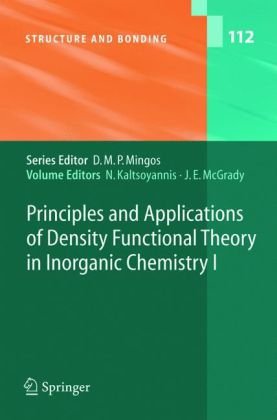

Most ebook files are in PDF format, so you can easily read them using various software such as Foxit Reader or directly on the Google Chrome browser.
Some ebook files are released by publishers in other formats such as .awz, .mobi, .epub, .fb2, etc. You may need to install specific software to read these formats on mobile/PC, such as Calibre.
Please read the tutorial at this link: https://ebookbell.com/faq
We offer FREE conversion to the popular formats you request; however, this may take some time. Therefore, right after payment, please email us, and we will try to provide the service as quickly as possible.
For some exceptional file formats or broken links (if any), please refrain from opening any disputes. Instead, email us first, and we will try to assist within a maximum of 6 hours.
EbookBell Team

0.0
0 reviews
ISBN 10: 3540218602
ISBN 13: 9783540218609
Author: Nik Kaltsoyanis, John E McGrady
Based on the typical structure of a specialized scientific monograph, especially one covering a theoretical topic like Density Functional Theory (DFT) with a focus on inorganic chemistry, here is a detailed table of contents for "Principles and Applications of Density Functional Theory in Inorganic Chemistry I"
Part I: Theoretical Principles of Density Functional Theory
Chapter 1: The Foundations of Quantum Mechanics
Review of the Schrödinger Equation
The Born-Oppenheimer Approximation
Many-Body Problems
Chapter 2: The Hohenberg-Kohn Theorems
First Hohenberg-Kohn Theorem: Existence of a Universal Functional
Second Hohenberg-Kohn Theorem: The Variational Principle
The Role of Electron Density
Chapter 3: The Kohn-Sham Approach
Introduction of the Kohn-Sham Equations
The Exchange-Correlation Functional (Exc[ρ])
Orbital Energies and Eigenvalues
Chapter 4: Approximations to the Exchange-Correlation Functional
The Local Density Approximation (LDA)
Generalized Gradient Approximation (GGA)
Hybrid Functionals (e.g., B3LYP, PBE0)
Meta-GGA and long-range corrected functionals
Chapter 5: Basis Sets
Atomic Orbitals and Linear Combination of Atomic Orbitals (LCAO)
Gaussian Type Orbitals (GTOs) and Slater Type Orbitals (STOs)
Pople, Dunning, and other basis sets
Pseudo-potentials and effective core potentials
Part II: Practical DFT Calculations for Inorganic Systems
Chapter 6: Computational Workflow and Software
Introduction to Quantum Chemistry Software (e.g., Gaussian, ORCA, ADF)
Input Files and Job Submission
Visualization of Molecular Orbitals and Electron Density
Chapter 7: Geometry Optimization and Molecular Structures
Finding Minima on the Potential Energy Surface
Convergence Criteria
Transition State Search
Chapter 8: Thermodynamic and Spectroscopic Properties
Calculation of Vibrational Frequencies (IR, Raman)
Thermochemical Analysis (Enthalpy, Entropy, Gibbs Free Energy)
NMR and EPR Spectroscopy
Part III: Applications in Inorganic Chemistry
Chapter 9: Electronic Structure of Transition Metal Complexes
Ligand Field Theory and Crystal Field Theory
DFT for Spin States and Multi-configurational Systems
Bonding Analysis (NBO, QTAIM)
Chapter 10: Applications in Homogeneous Catalysis
Mechanism Elucidation of Catalytic Cycles
Activation Energies and Reaction Pathways
Modeling of Organometallic Reactions
principles and applications of density functional
principles of density
practical application of density
fundamentals and applications of density functional theory
density functional theory applications
Tags: Nik Kaltsoyanis, John E McGrady, Principles, Applications